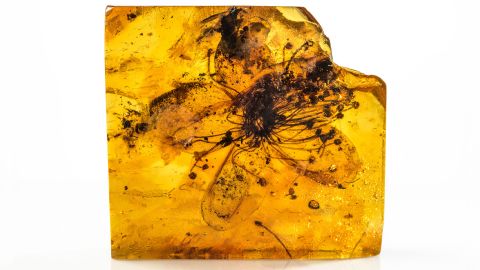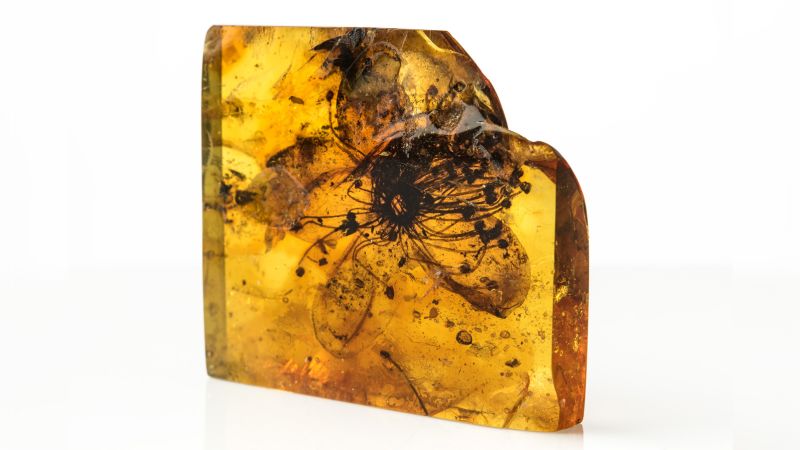Striking new images reveal beauty of forgotten, and largest, amber fossil of a flower

Sign up for CNN’s Wonder Theory science newsletter. Explore the universe with news on fascinating discoveries, scientific advancements and more.
CNN
—
Almost 40 million years ago a flower bloomed in a Baltic conifer forest. Dripping tree resin encased the petals and pollen, forever showcasing an ephemeral moment in our planet’s past.
Scientists have taken a fresh look at the unique amber fossil, which was first documented in 1872 as belonging to a pharmacist called Kowalewski in what’s now Kaliningrad, Russia.
The striking fossil had been languishing largely forgotten in the collection of the Federal Institute for Geosciences and Natural Resources in Berlin (BGR), according to Eva-Maria Sadowski, a postdoctoral researcher at the Museum für Naturkunde, Berlin’s natural history museum, and author of the new study.
She said she heard about the fossilized flower, officially known as specimen X4088, in passing from a retired colleague, who she thought was exaggerating.
“He told me that he once visited the BGR and that (he) saw the most amazing and largest amber flower in their collection. I was not aware that they had an amber collection. So I asked the curator of the BGR collection if I could come to see their collection – and there I found the specimen X4088,” she said via email.

“I was more than surprised to see such a large flower inclusion.”
At 28 millimeters (1.1 inches) across, it’s the largest known flower to be fossilized in amber – three times the size of similar fossils.
Sadowski extracted and examined pollen from the amber. She found that the flower had been misidentified when it was first studied.
“The original genus name of this specimen was Stewartia of the plant family Theaceae. But we could show in our study that this was not correct, mainly based on the pollen morphology. But when the specimen was first studied in the 19th century, they (had) not discovered or studied the pollen,” she said.
The flower is closely related to a genus of flowering plants common in Asia today known as Symplocos – shrubs or trees that sport white or yellow flowers.
Originally named Stewartia kowalewskii, the authors propose a new name for the flower of Symplocos kowalewskii.
Amber fossils offer a tantalizing, three dimensional look at the past. As well as plants and flowers, a dinosaur tail, a crab, a hell ant, a spider mom and her young, an ancient bird’s foot and a lizard’s skull have been found entombed in globs of tree resin.
The study was published in the journal Scientific Reports on Thursday.







